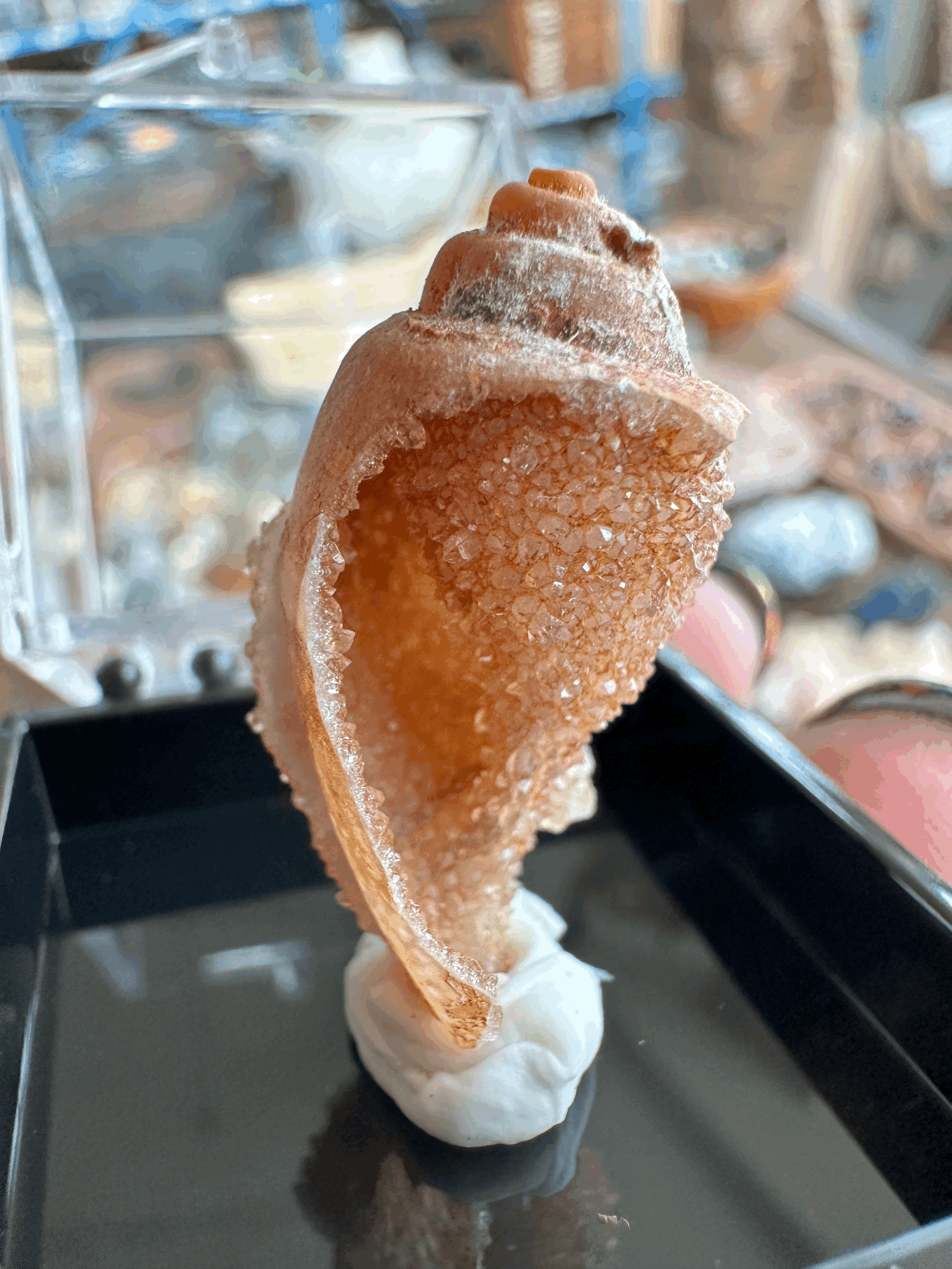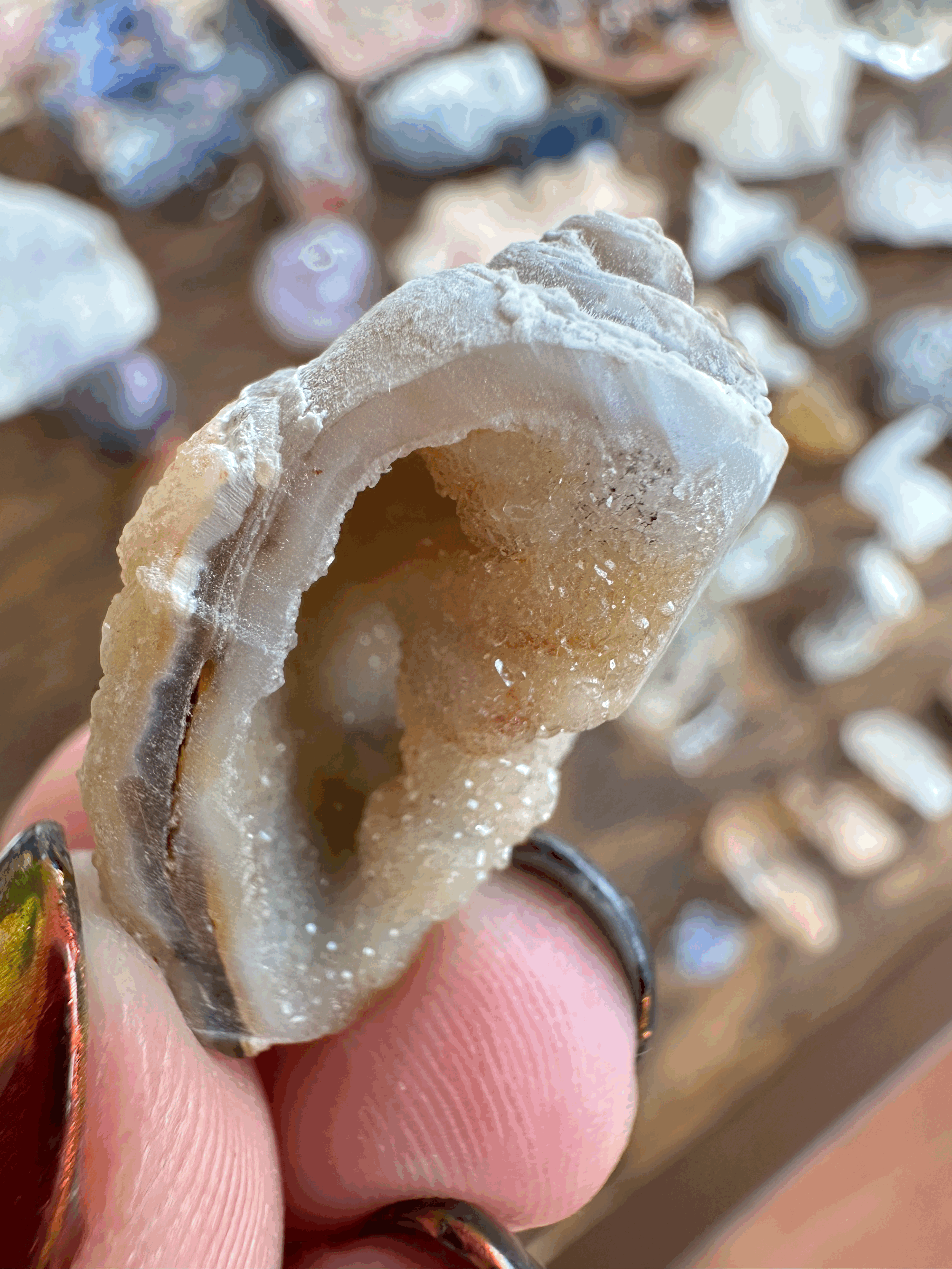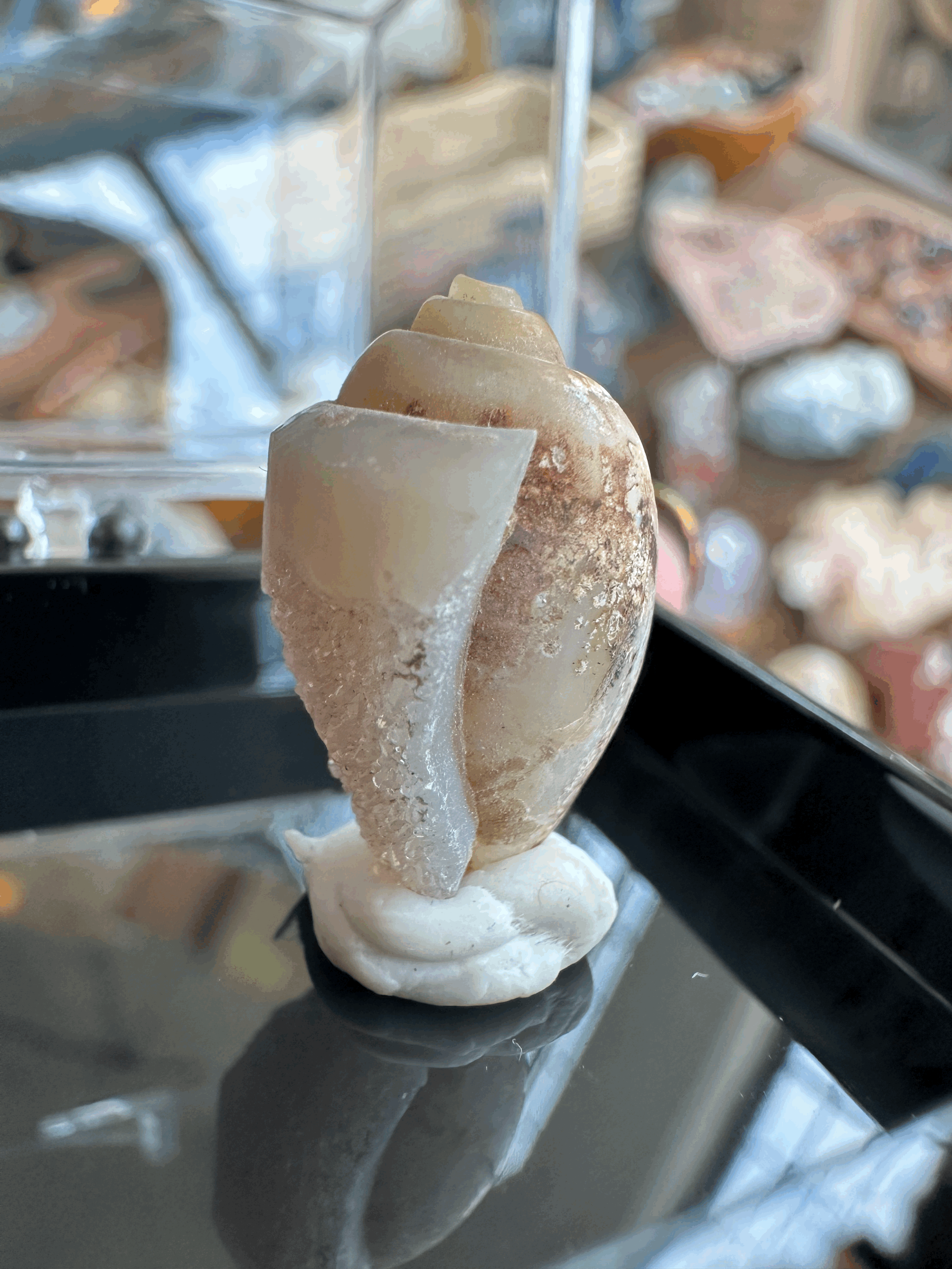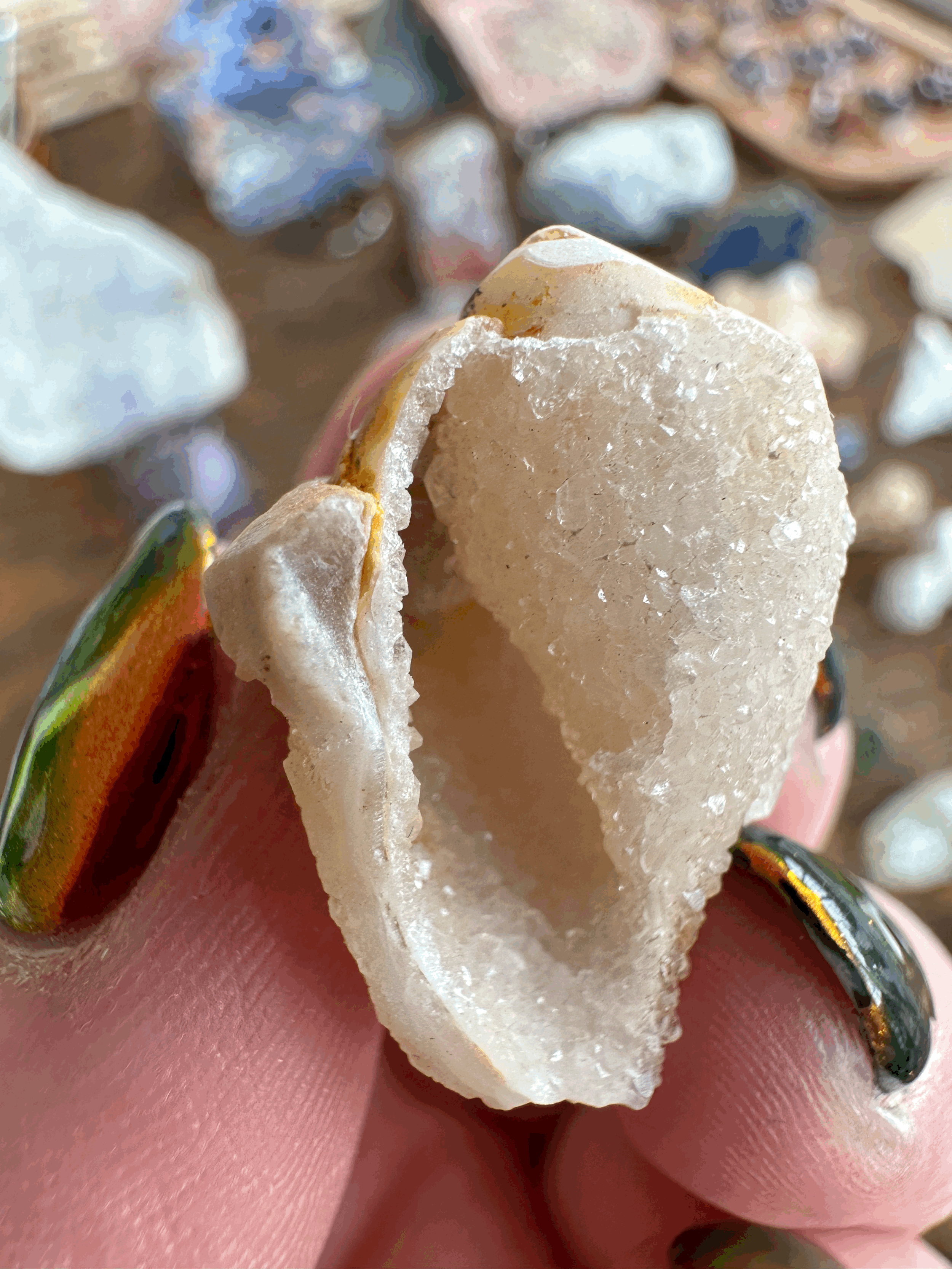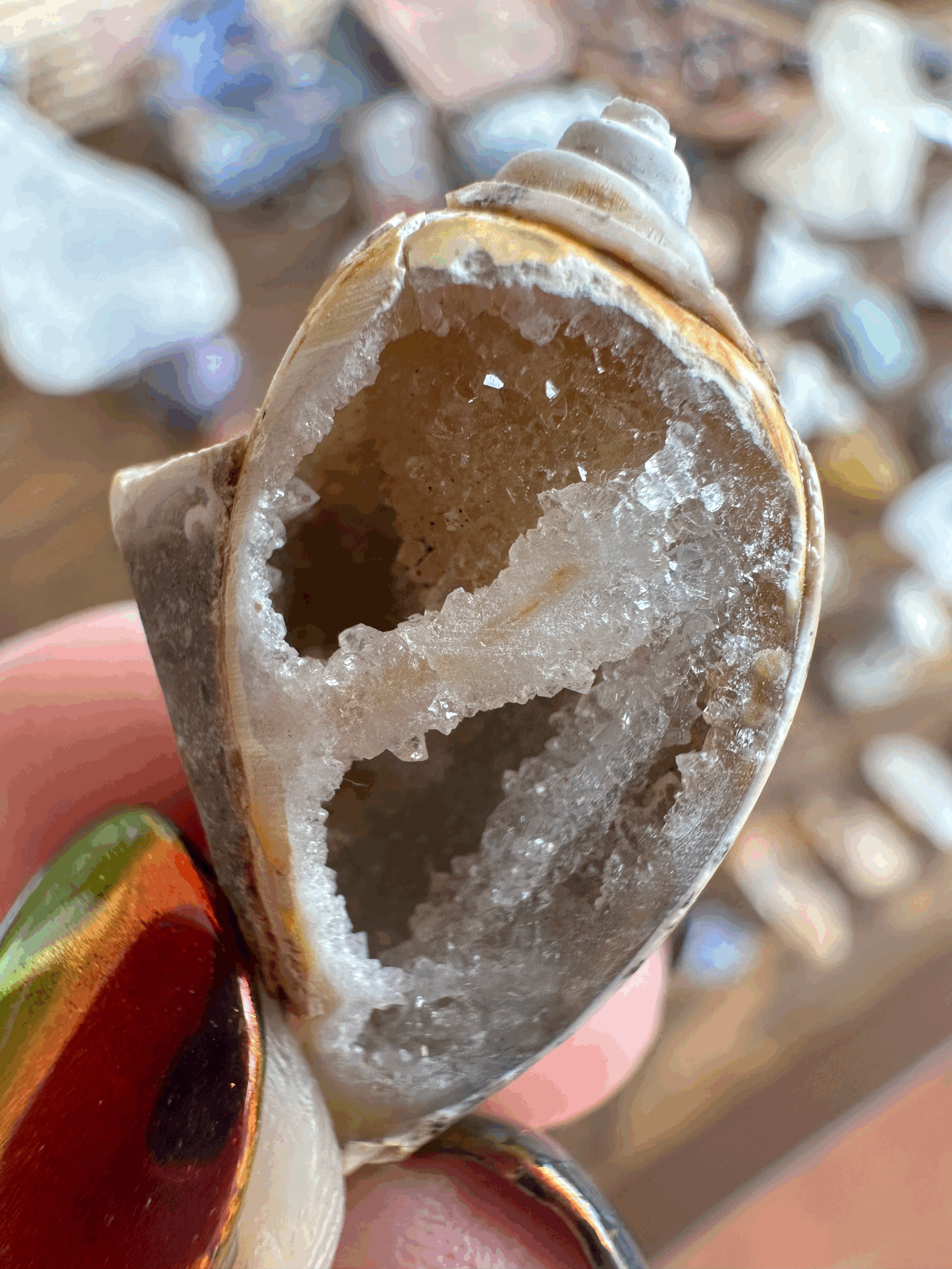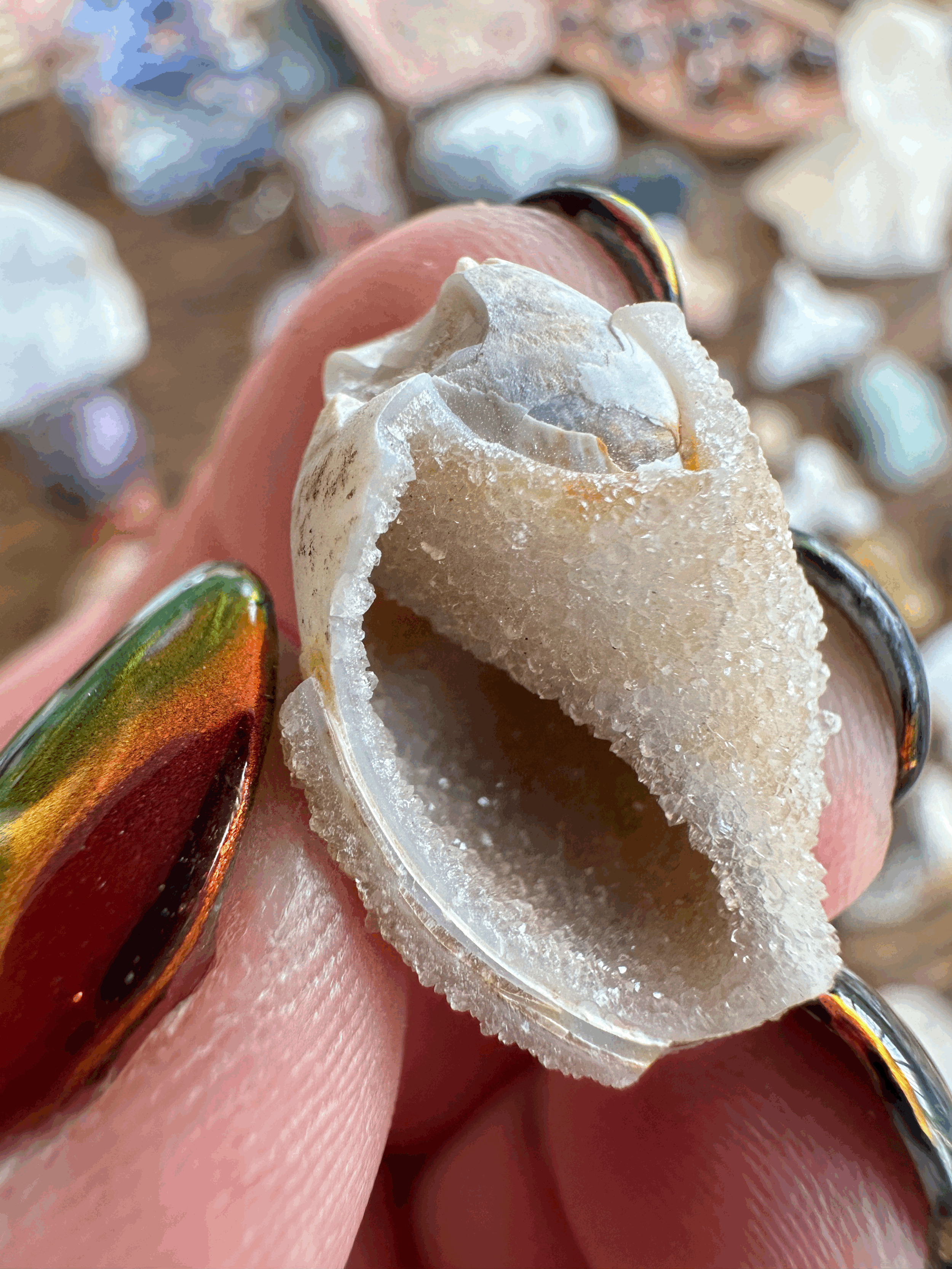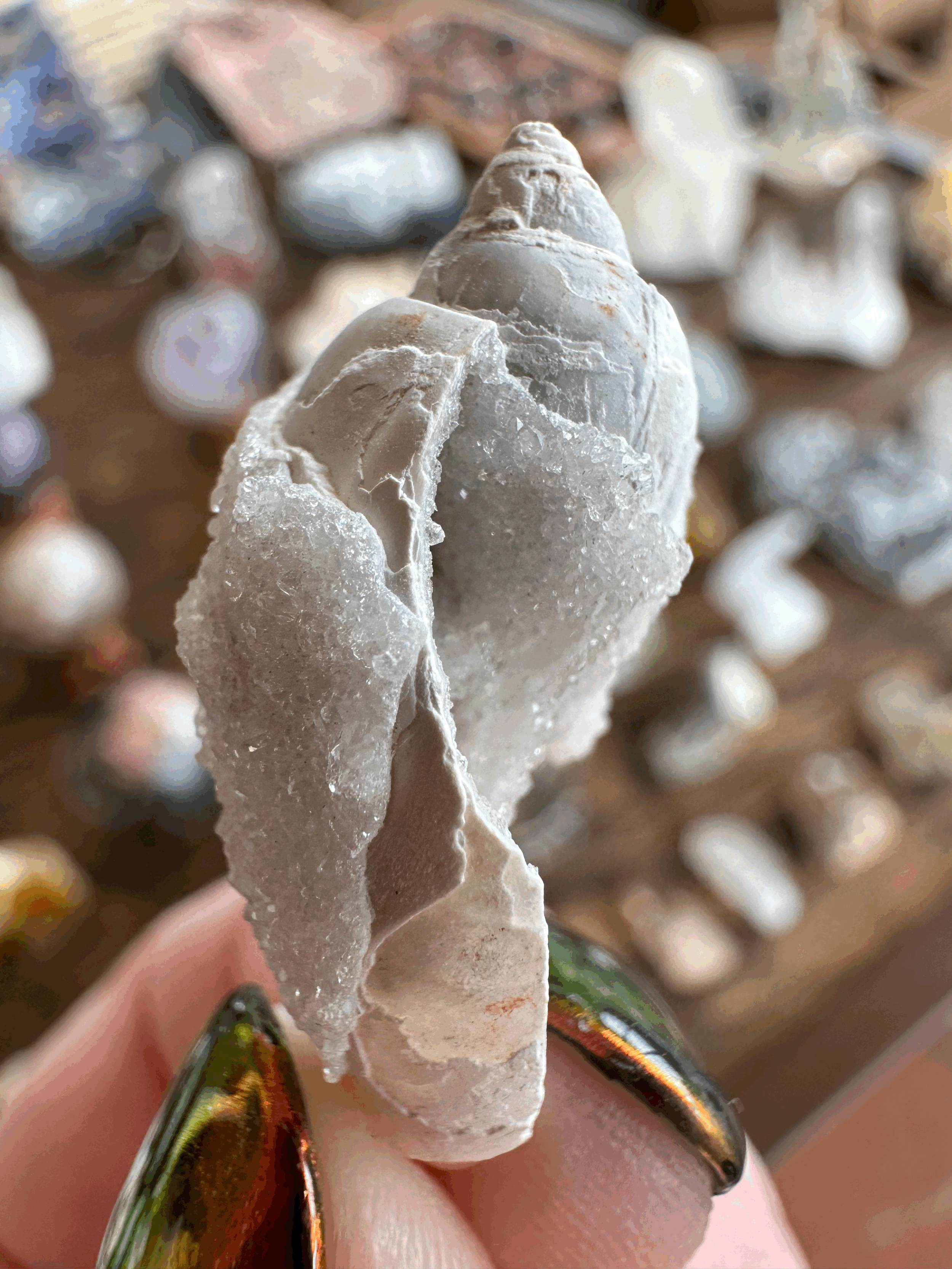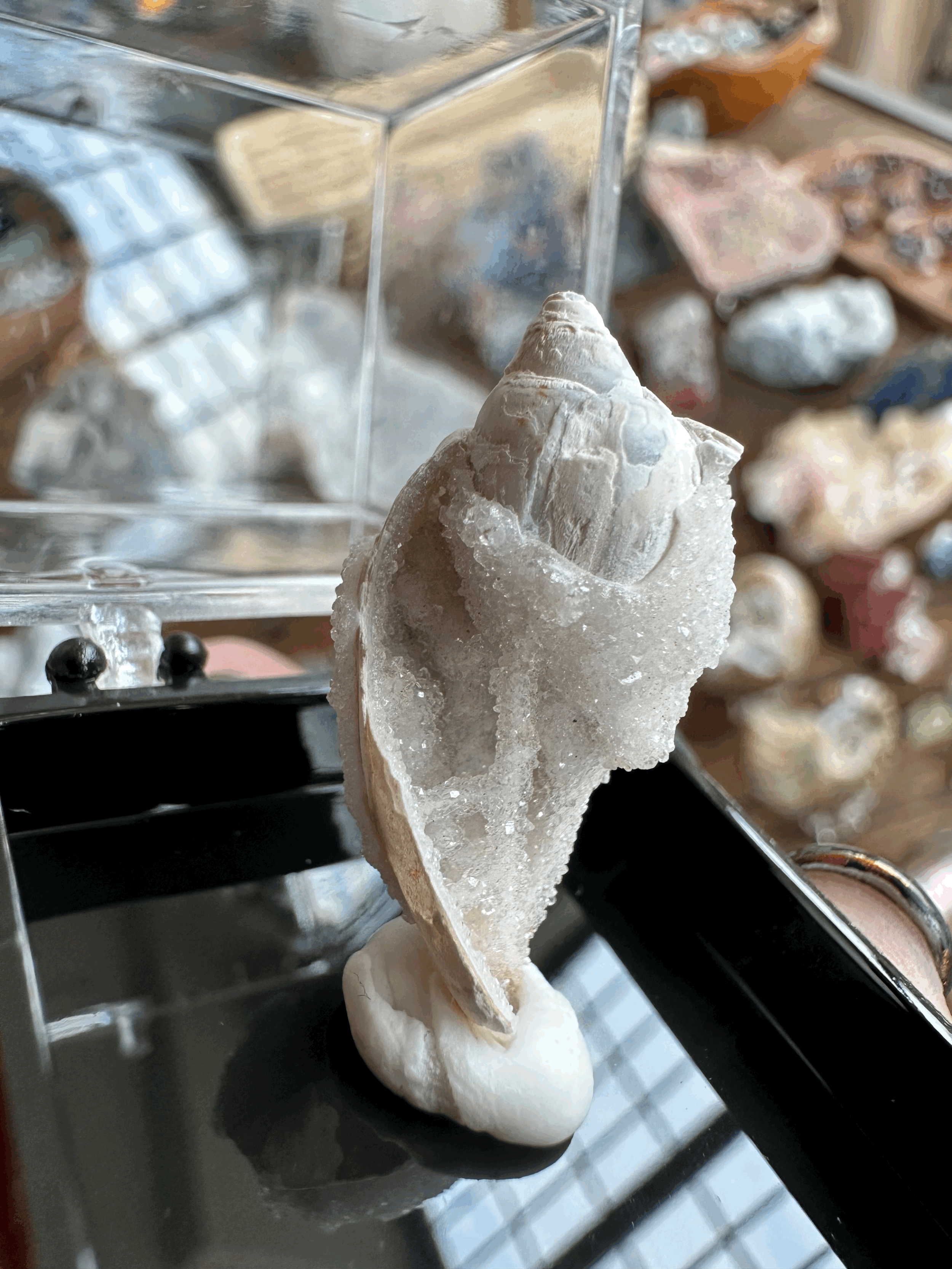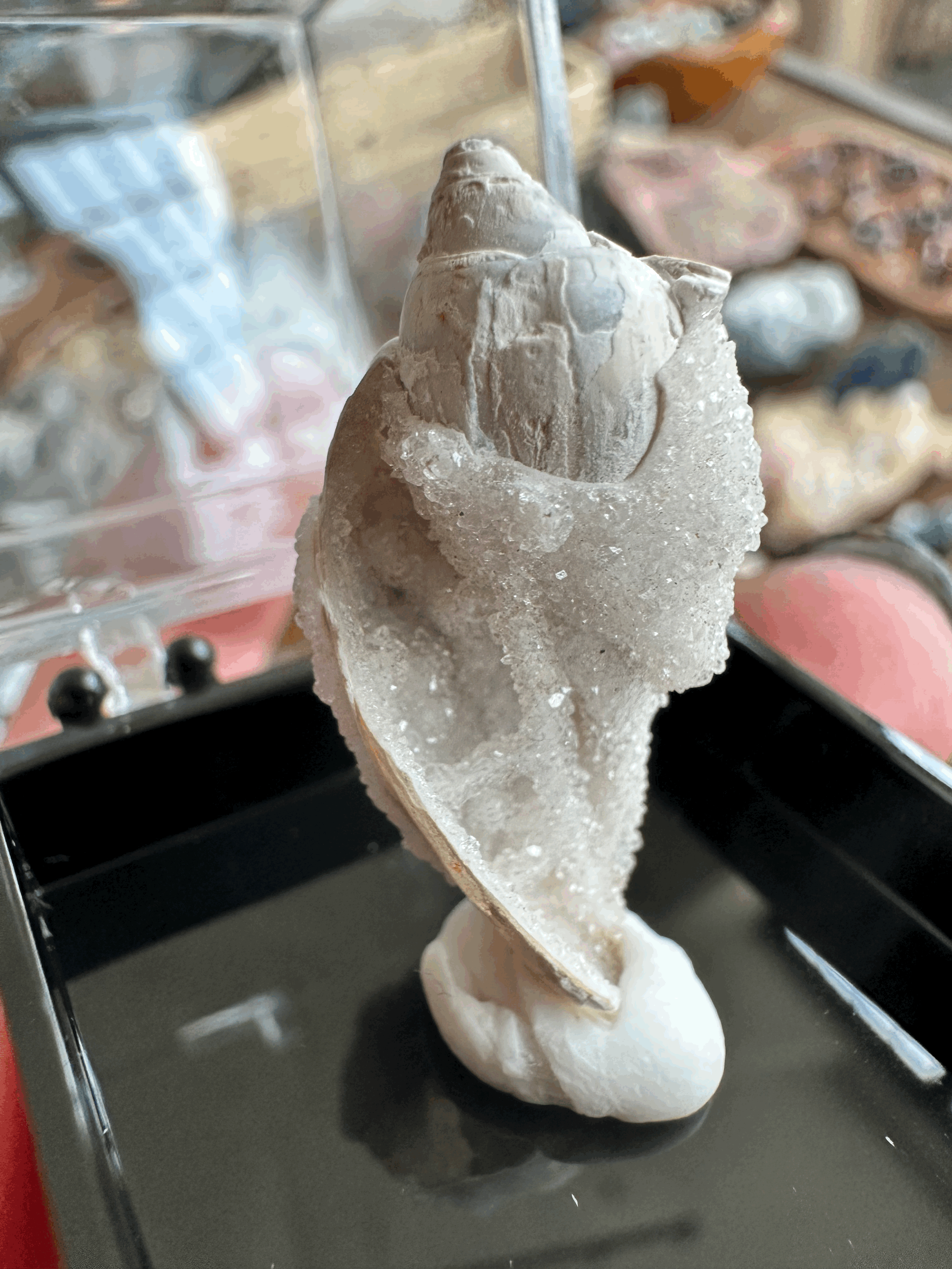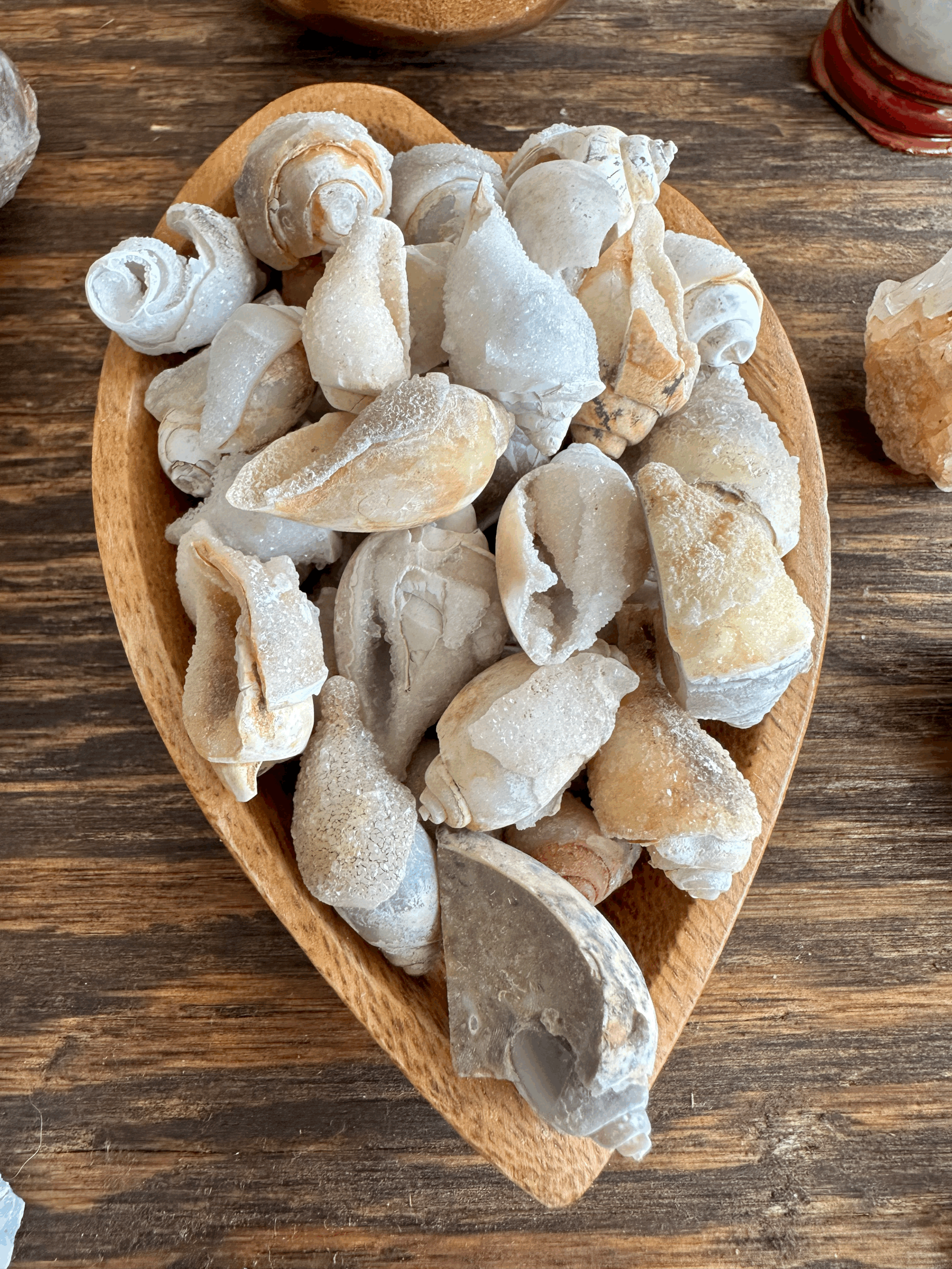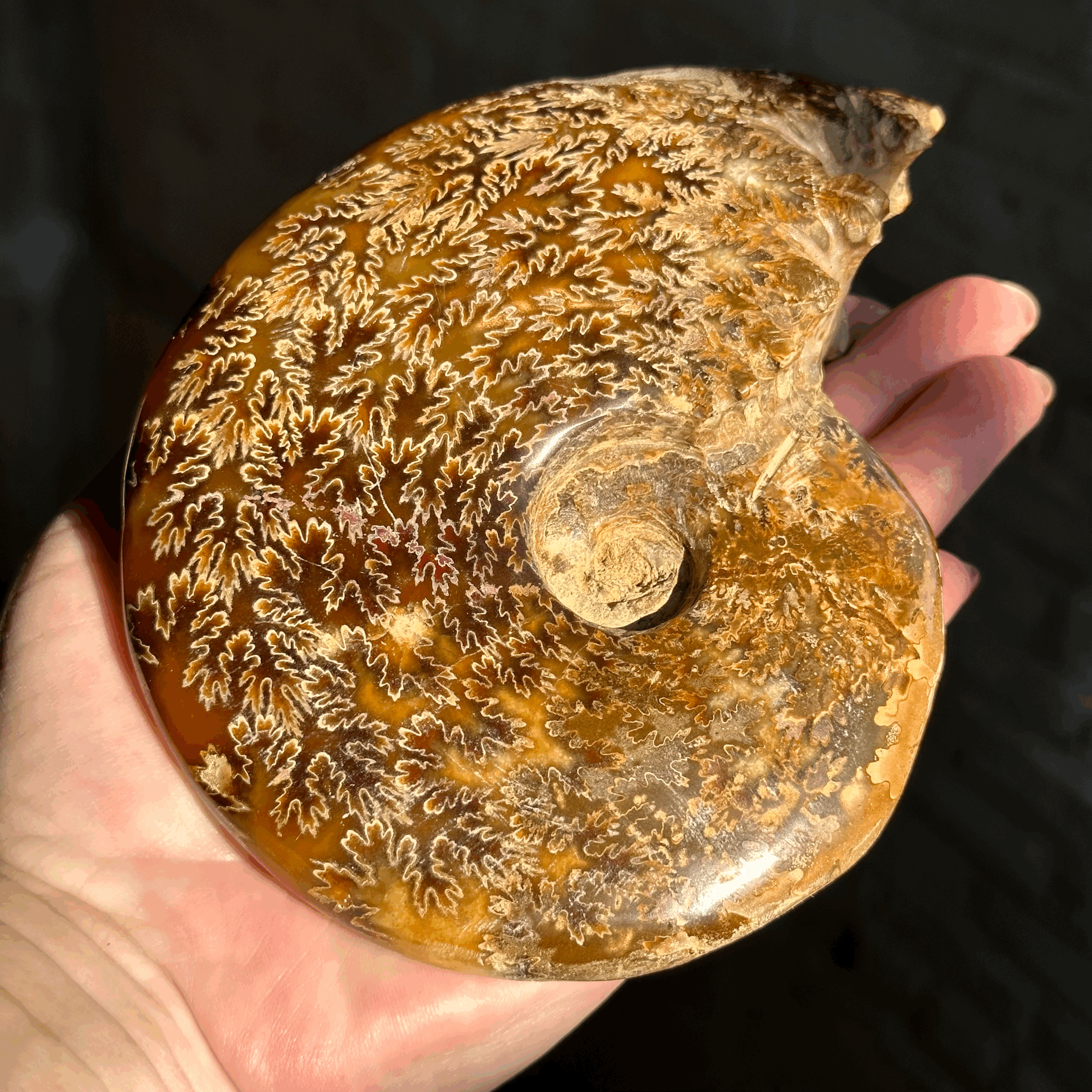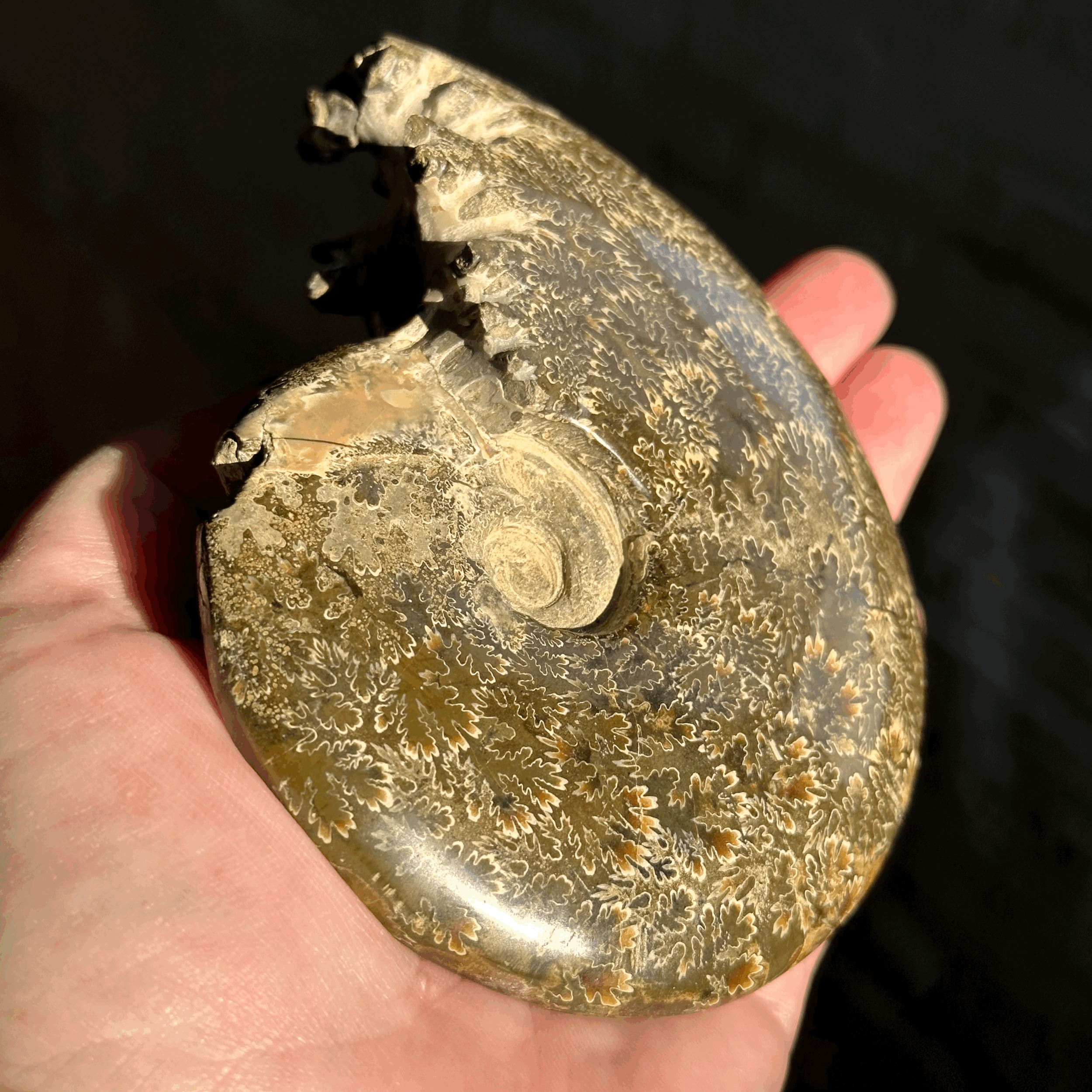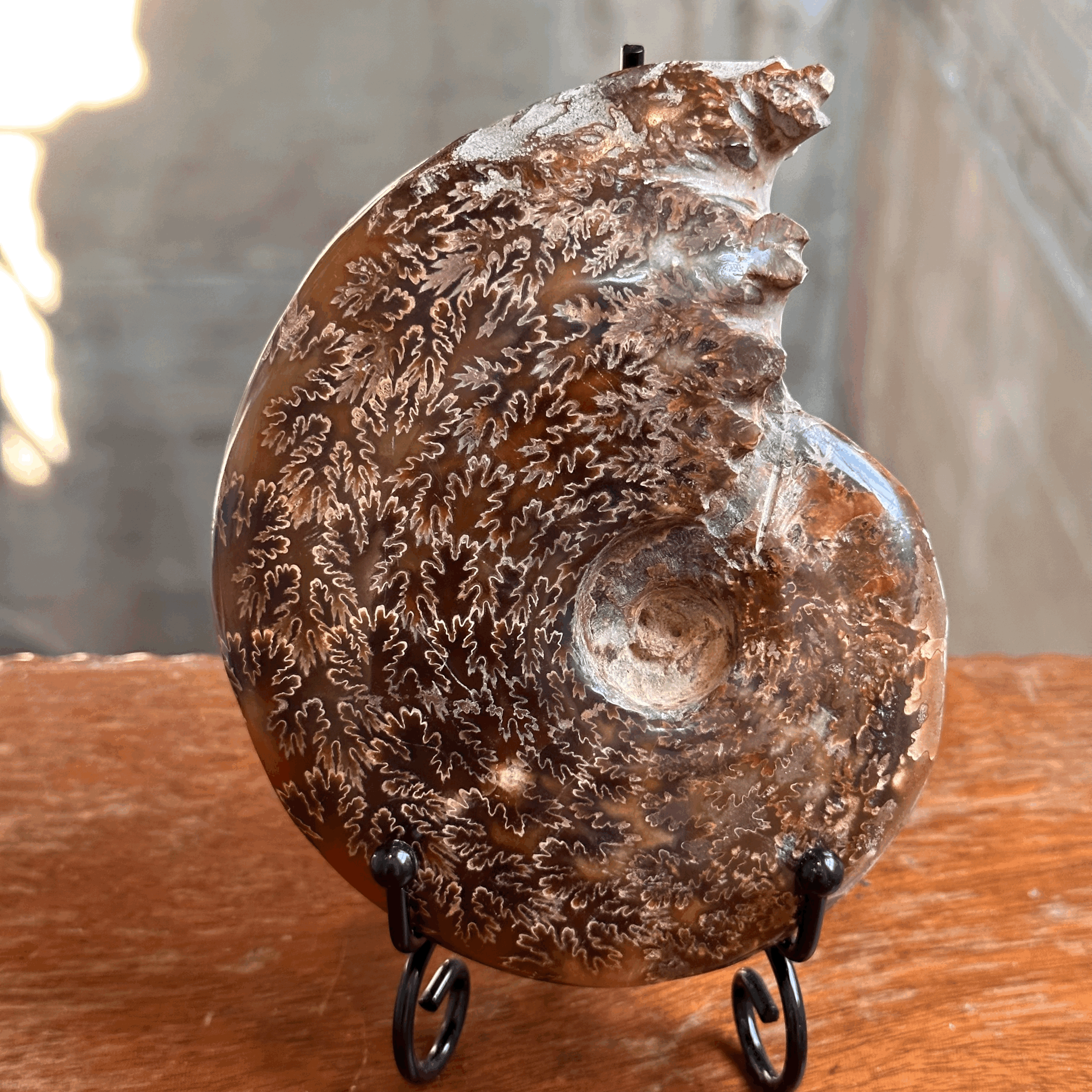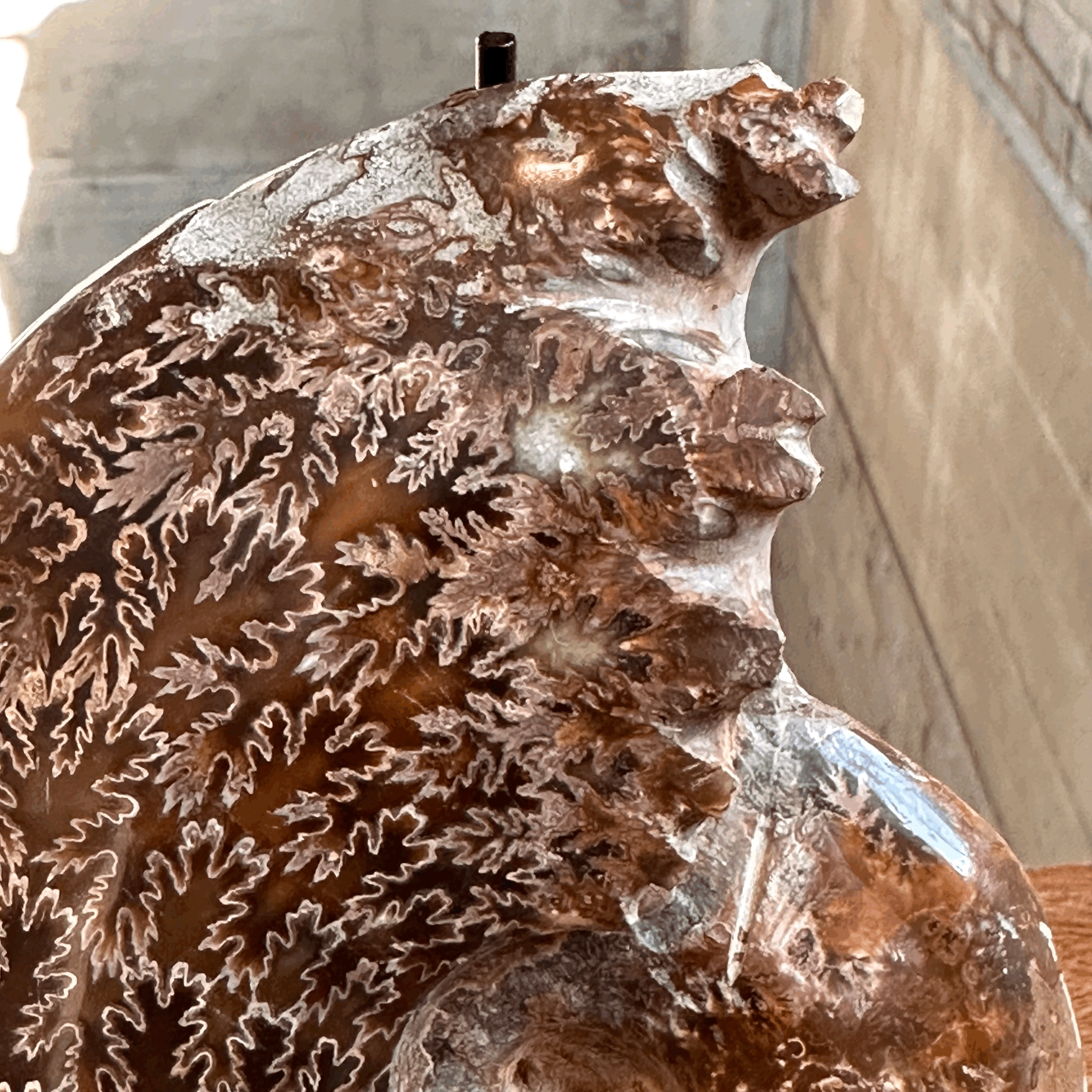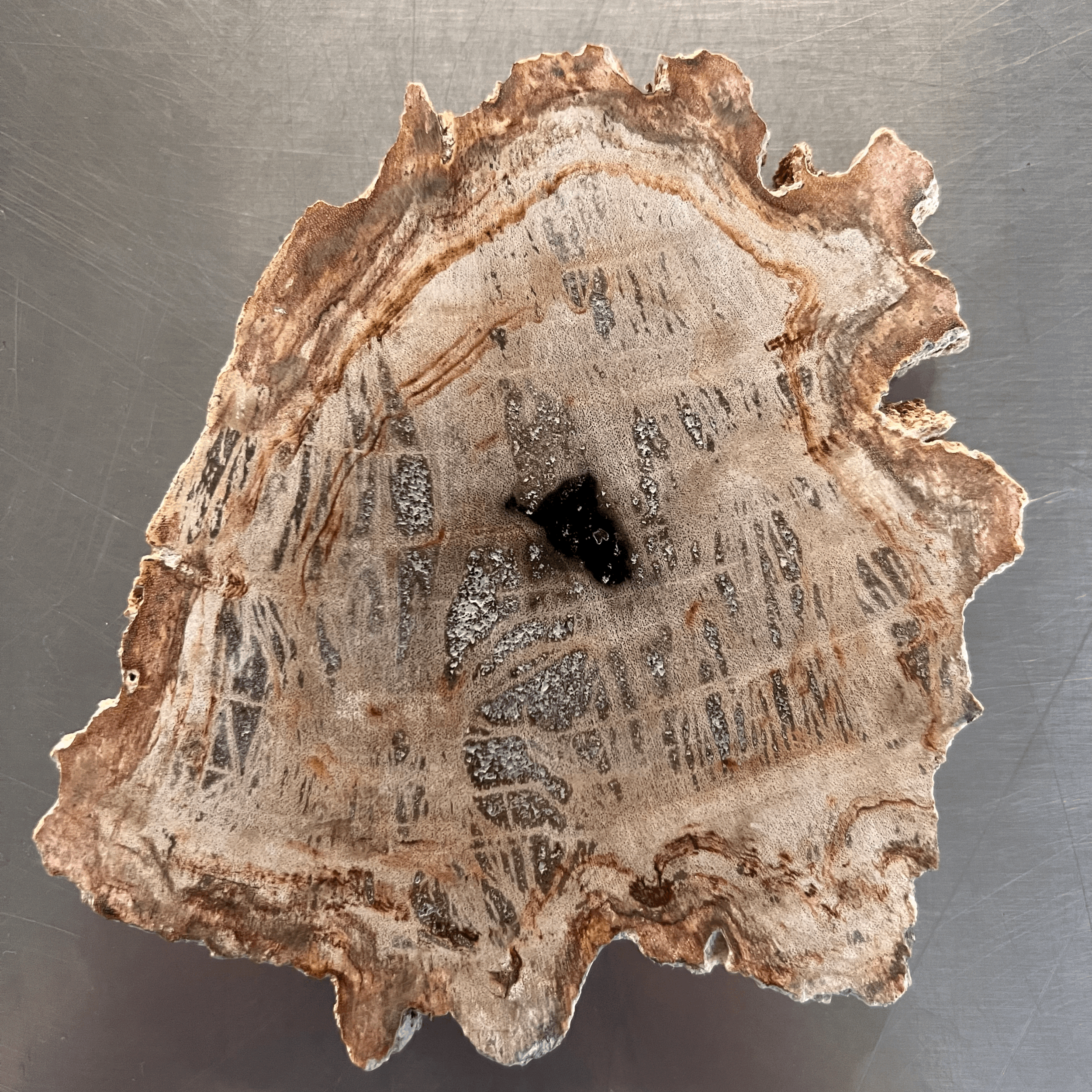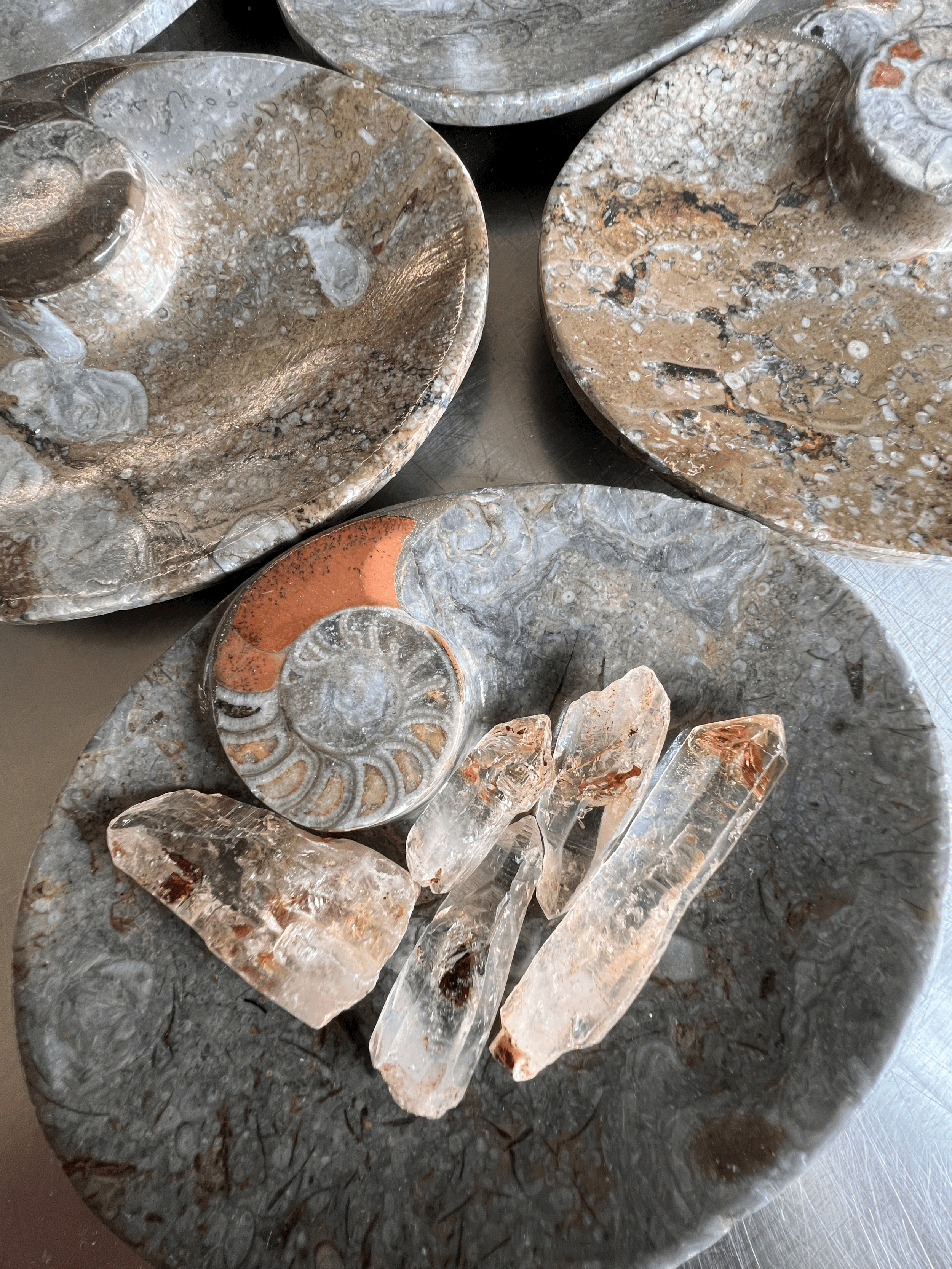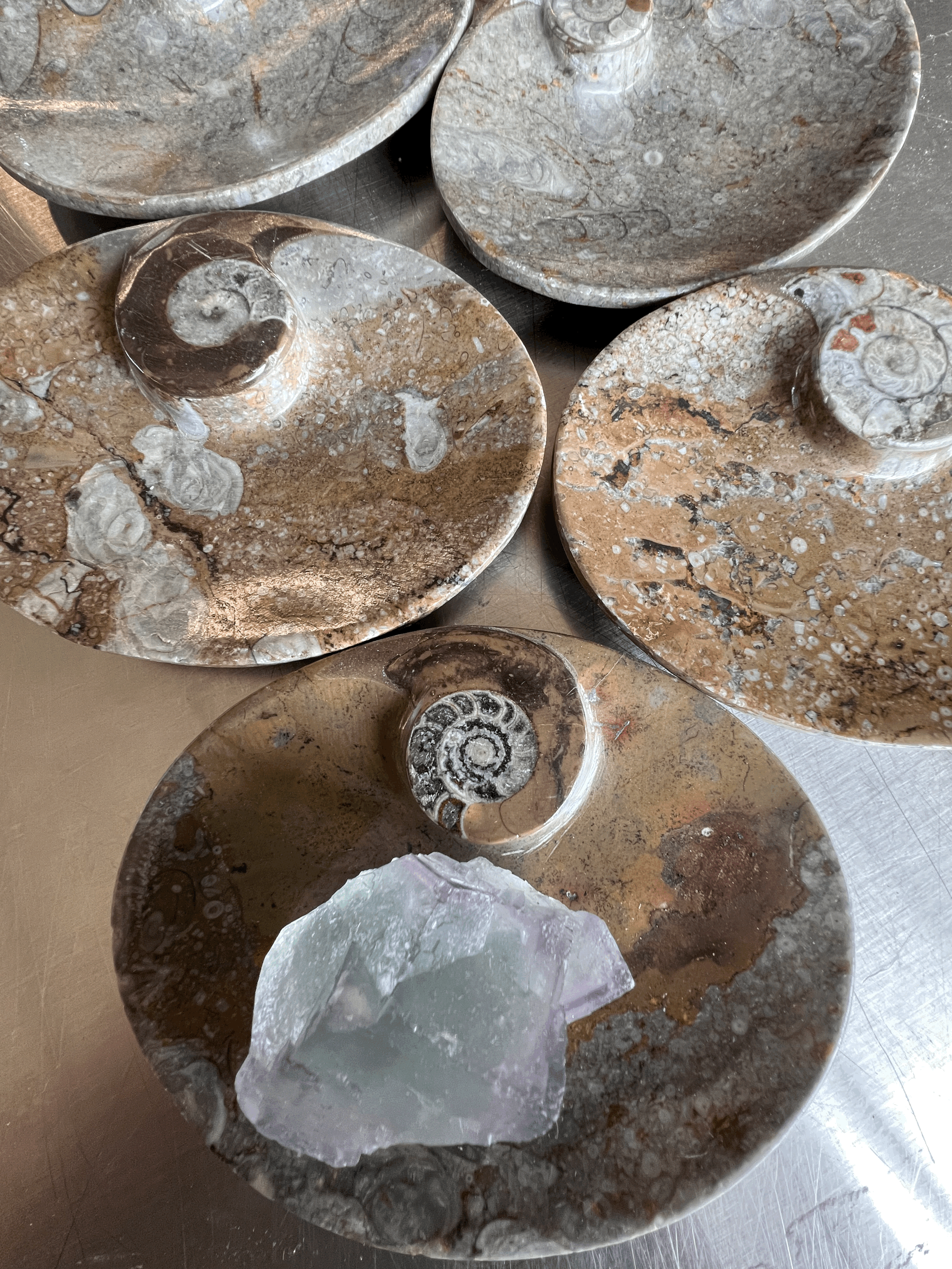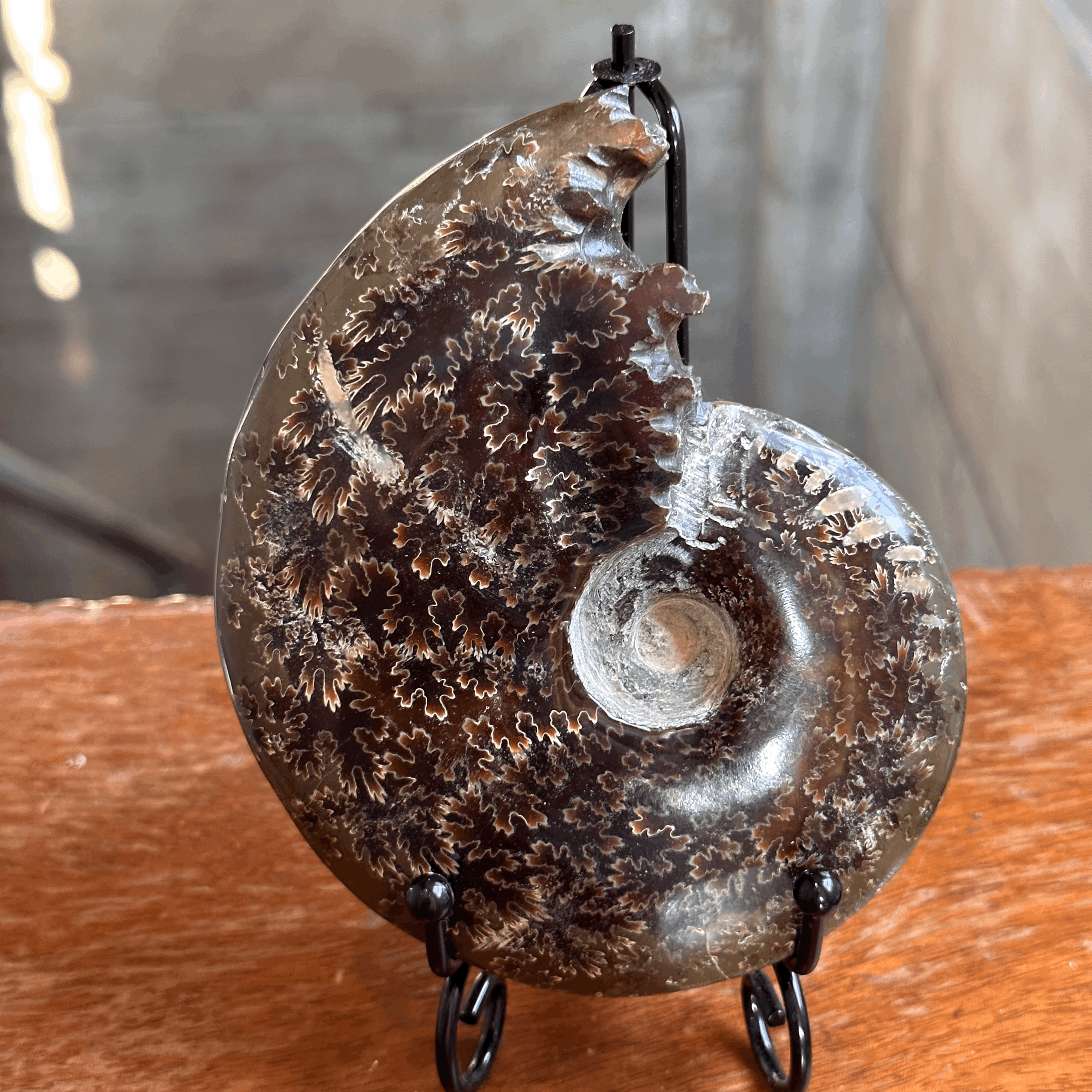

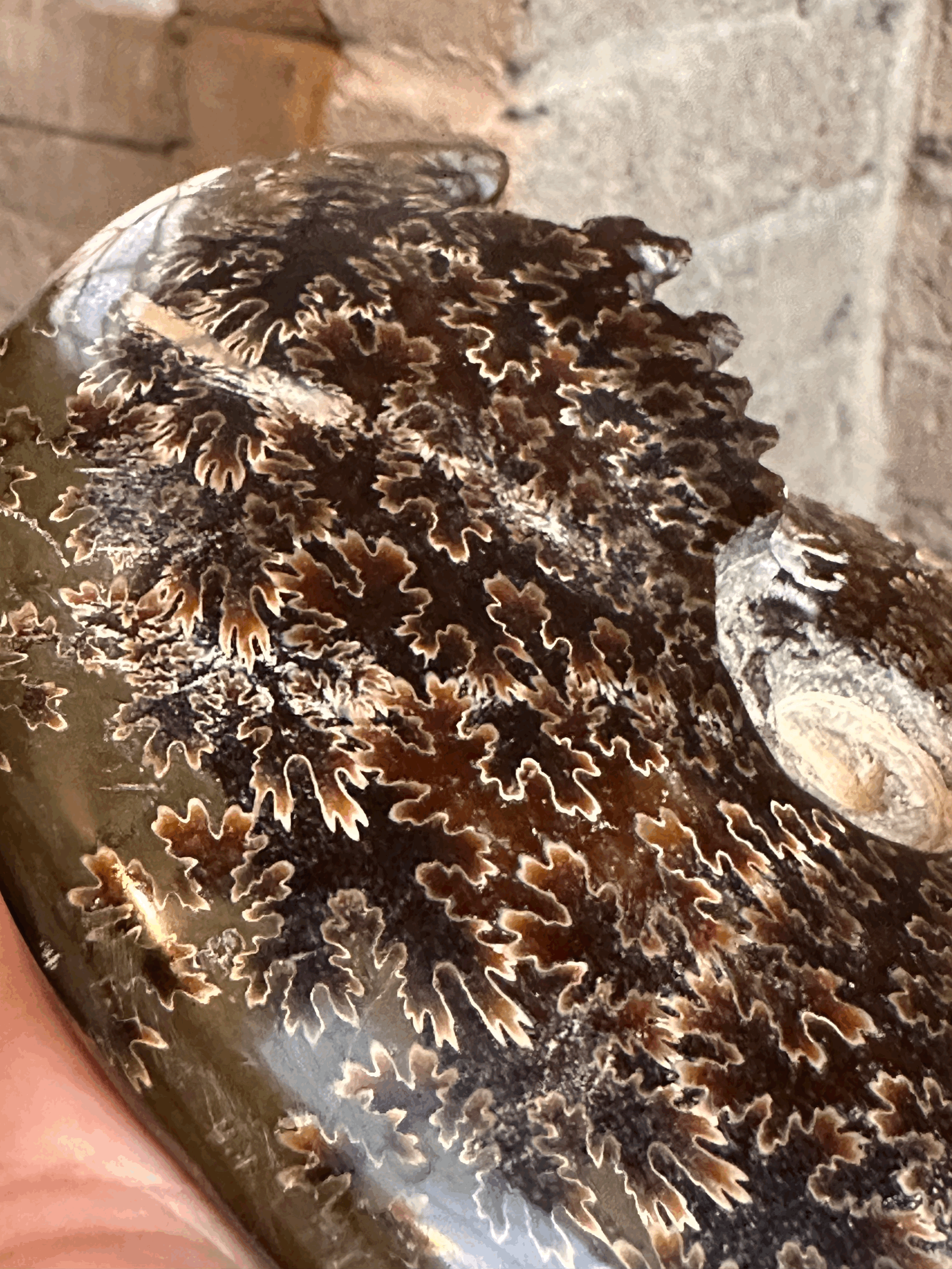
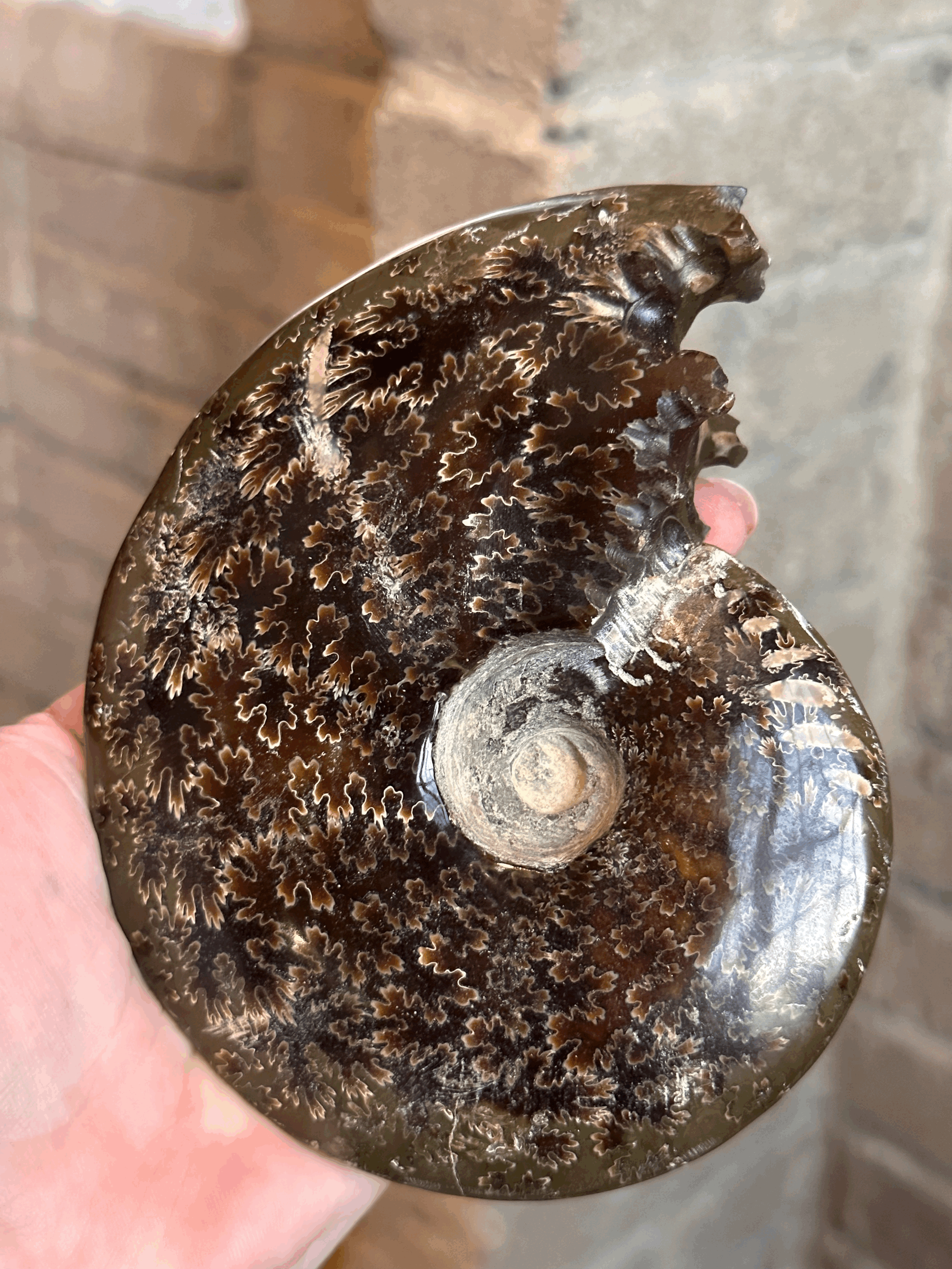


polished Ammonite with End Chamber and detailed septa (5"x4")
Beautiful ammonite fossil specimen to display in your collection or as a gift for someone who really digs old stuff.
I’ve taken photos in both sun and shade so you can see how the lighting will affect the colours of this piece. The base color is best described as dark chocolate brown; with hints of tan and white, and a rim along the exterior curve of deep olive green.
Ammonites are extinct marine animals that lived in shells, roughly 260 million to 66 million years ago.
These coil-shelled, many-tentacled mollusks disappeared after the dinosaur-killing asteroid strike, in one of the worst mass extinctions of all time.
Sometimes you see ammonites in their chambered shells, but these ammonites have had their outer shell removed to expose their intricate “oak leaf” suture patterns. Sometimes these are referred to as sutured whole ammonties.
This abstract, wavy leaf pattern is indicative of the Cretaceous Period, while an ammonite of the earlier Permian to Triassic periods would have had a more linear pattern of septa.
Interesting factoid: It is believed that the original discus used by the ancient Greeks in their Olympics was a fossilized ammonite.
Weight: 552 grams (1 lb 4 oz). Size: roughly 5” x 4”
This fossil was weathered over millions of years and parts of the body filled with sea sediment and detritus. While is has been polished smooth, there are areas where the pattern is missing. This is natural to fossils and it is not damage. However this specimen does have some marks (white scratches) left behind from the polishing process and has been priced lower accordingly. A few pieces of the original iridescent shell were also left behind but those “mistakes” are quite pretty.
Beautiful ammonite fossil specimen to display in your collection or as a gift for someone who really digs old stuff.
I’ve taken photos in both sun and shade so you can see how the lighting will affect the colours of this piece. The base color is best described as dark chocolate brown; with hints of tan and white, and a rim along the exterior curve of deep olive green.
Ammonites are extinct marine animals that lived in shells, roughly 260 million to 66 million years ago.
These coil-shelled, many-tentacled mollusks disappeared after the dinosaur-killing asteroid strike, in one of the worst mass extinctions of all time.
Sometimes you see ammonites in their chambered shells, but these ammonites have had their outer shell removed to expose their intricate “oak leaf” suture patterns. Sometimes these are referred to as sutured whole ammonties.
This abstract, wavy leaf pattern is indicative of the Cretaceous Period, while an ammonite of the earlier Permian to Triassic periods would have had a more linear pattern of septa.
Interesting factoid: It is believed that the original discus used by the ancient Greeks in their Olympics was a fossilized ammonite.
Weight: 552 grams (1 lb 4 oz). Size: roughly 5” x 4”
This fossil was weathered over millions of years and parts of the body filled with sea sediment and detritus. While is has been polished smooth, there are areas where the pattern is missing. This is natural to fossils and it is not damage. However this specimen does have some marks (white scratches) left behind from the polishing process and has been priced lower accordingly. A few pieces of the original iridescent shell were also left behind but those “mistakes” are quite pretty.

